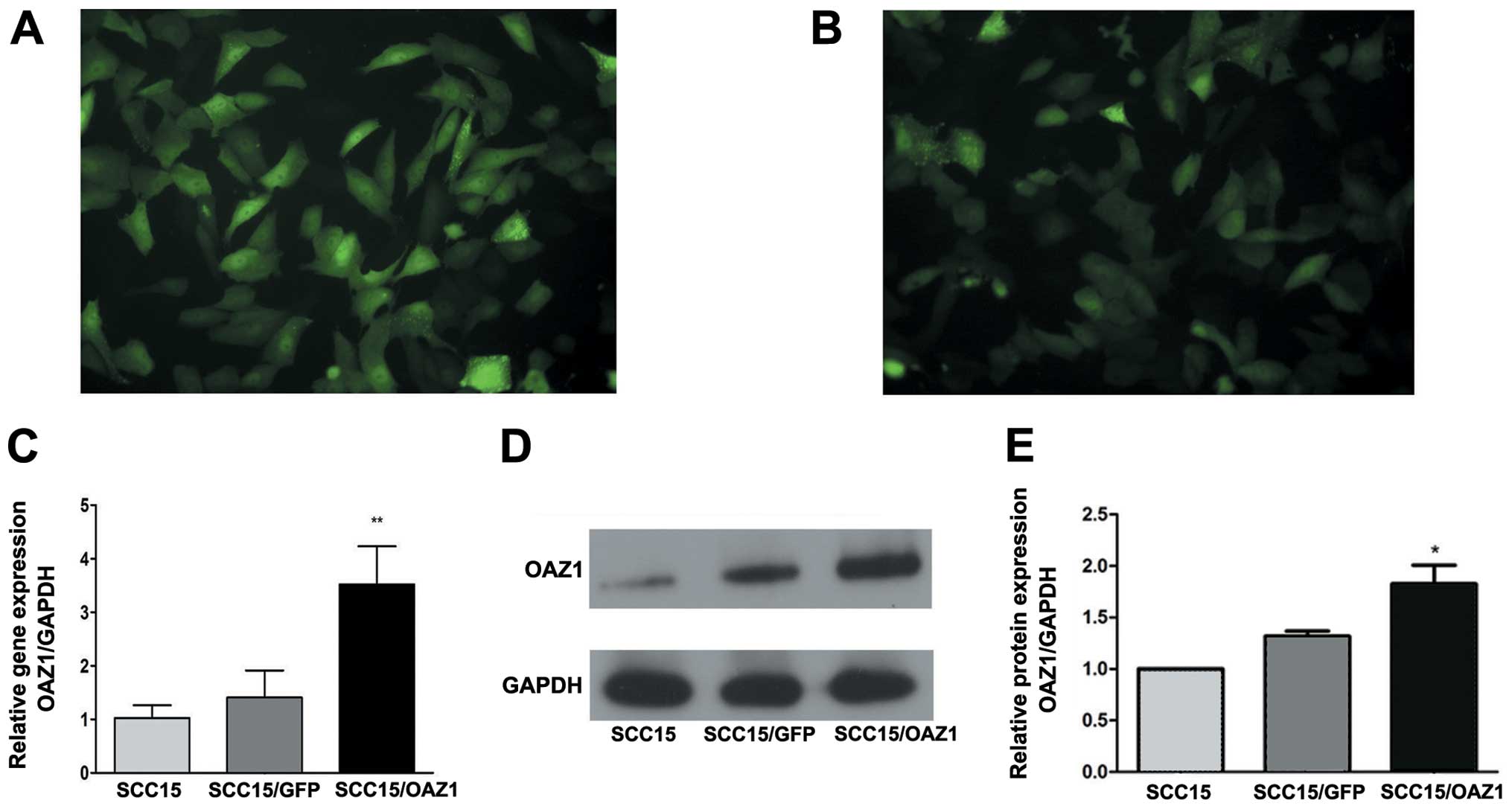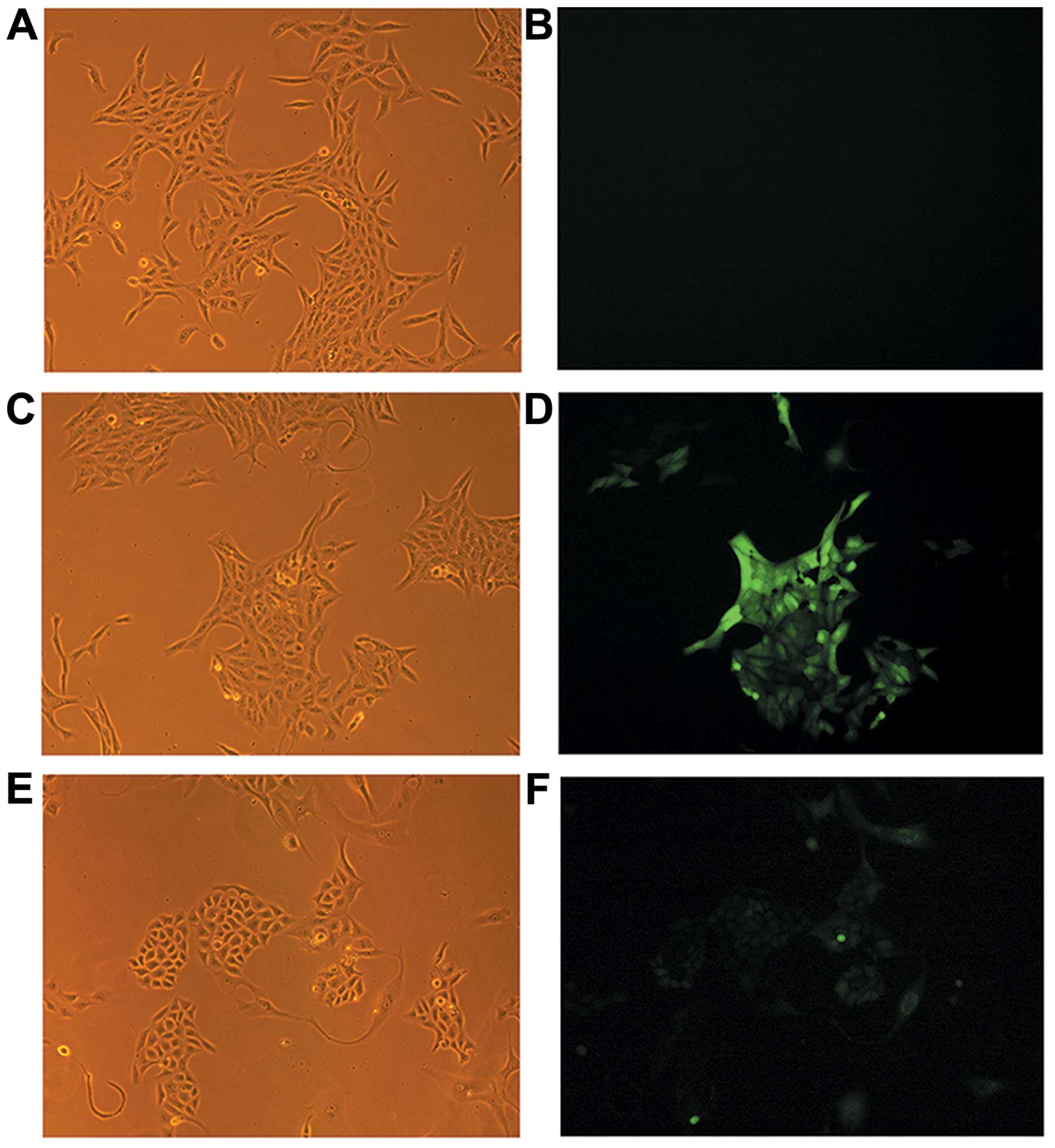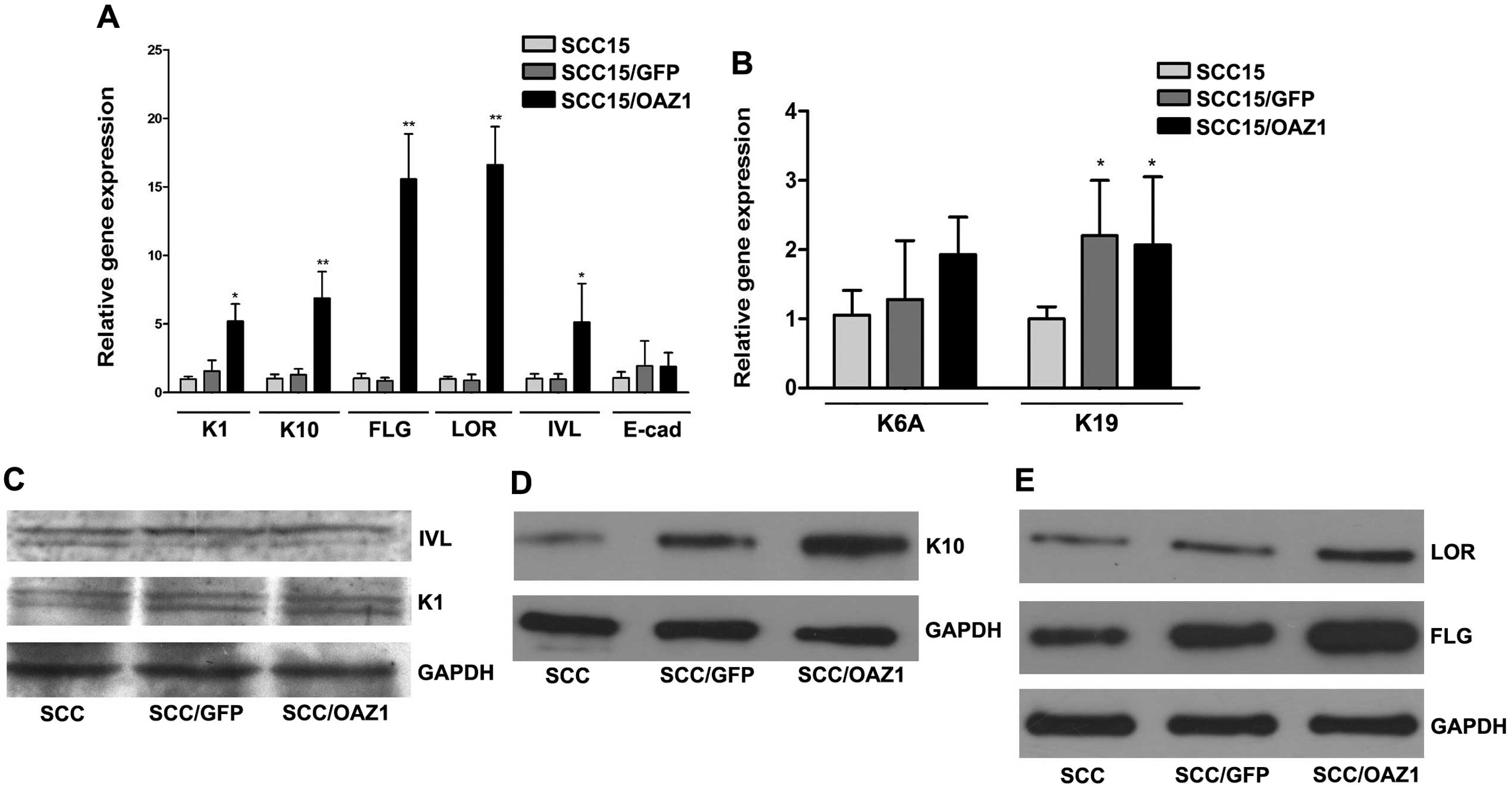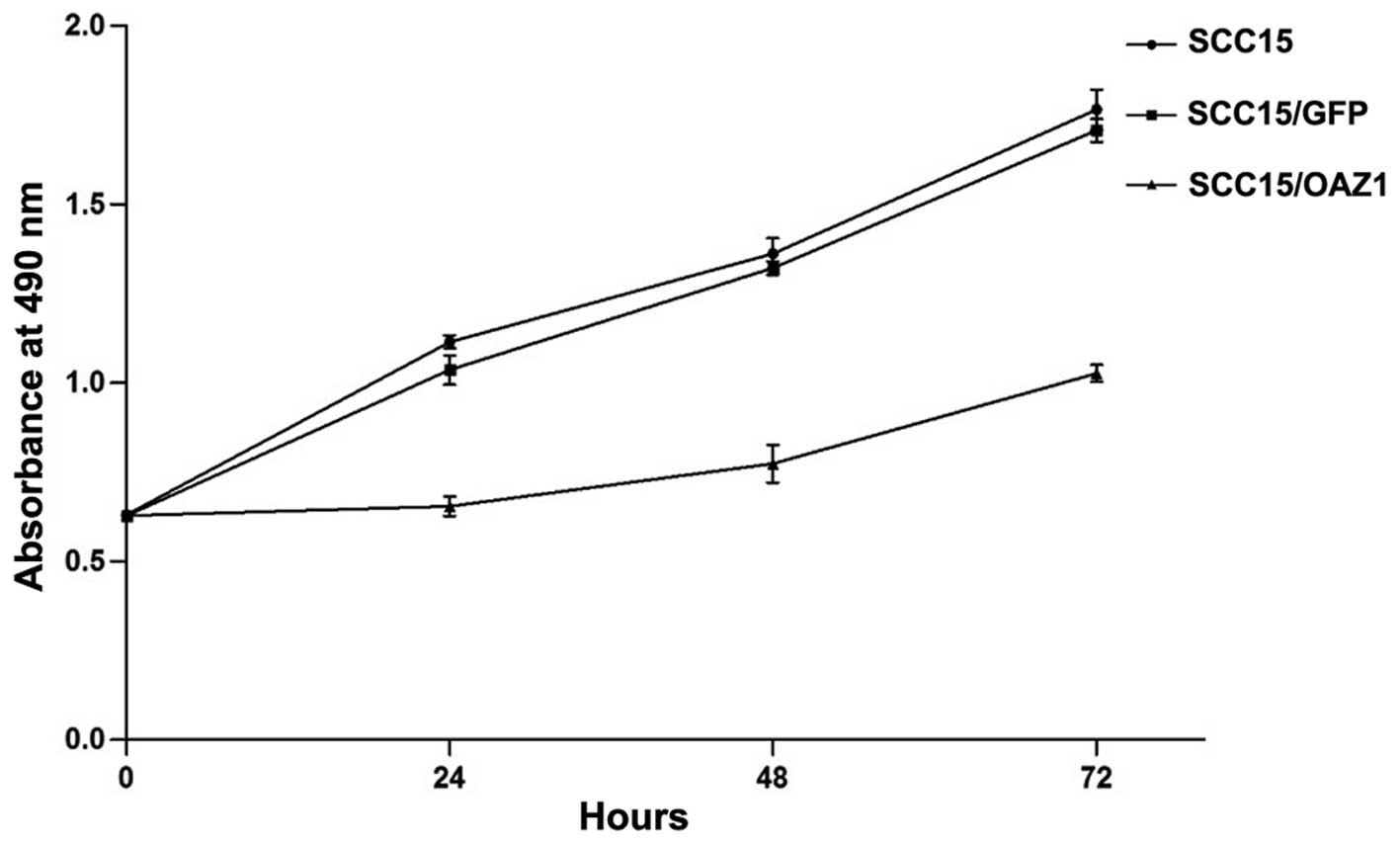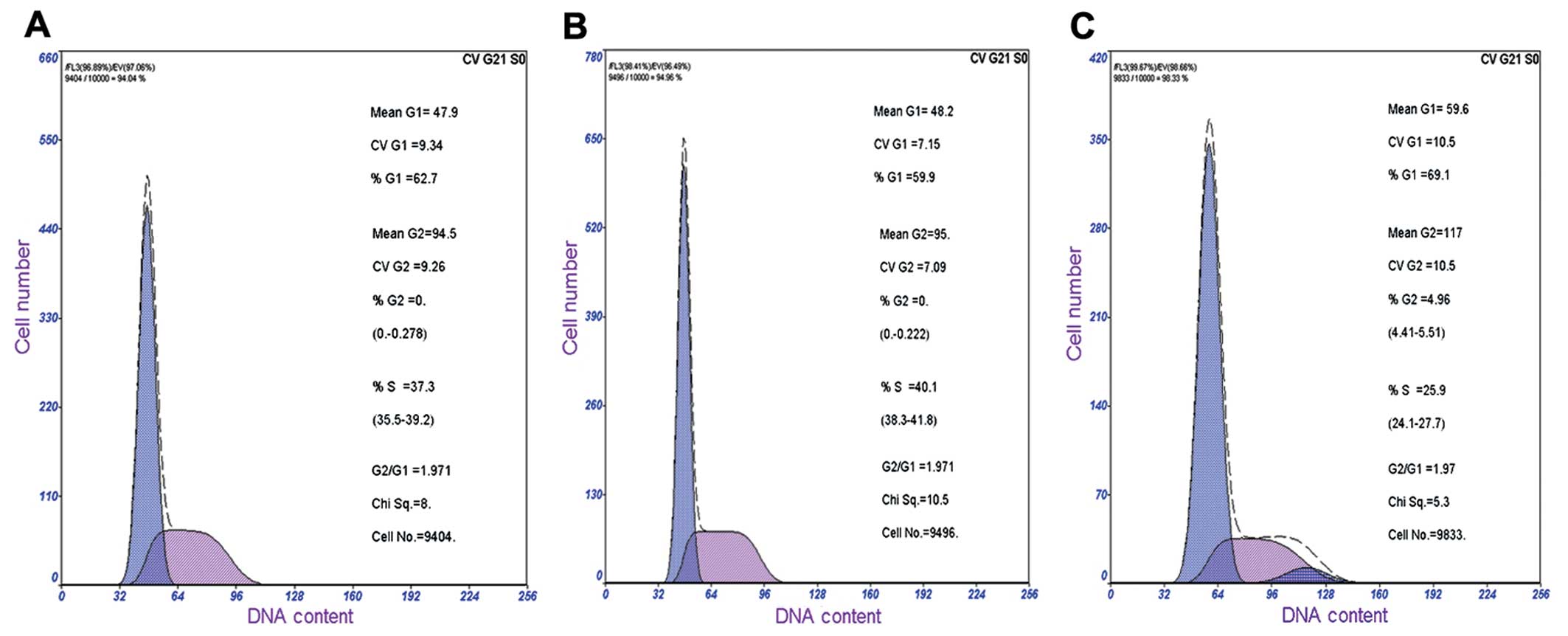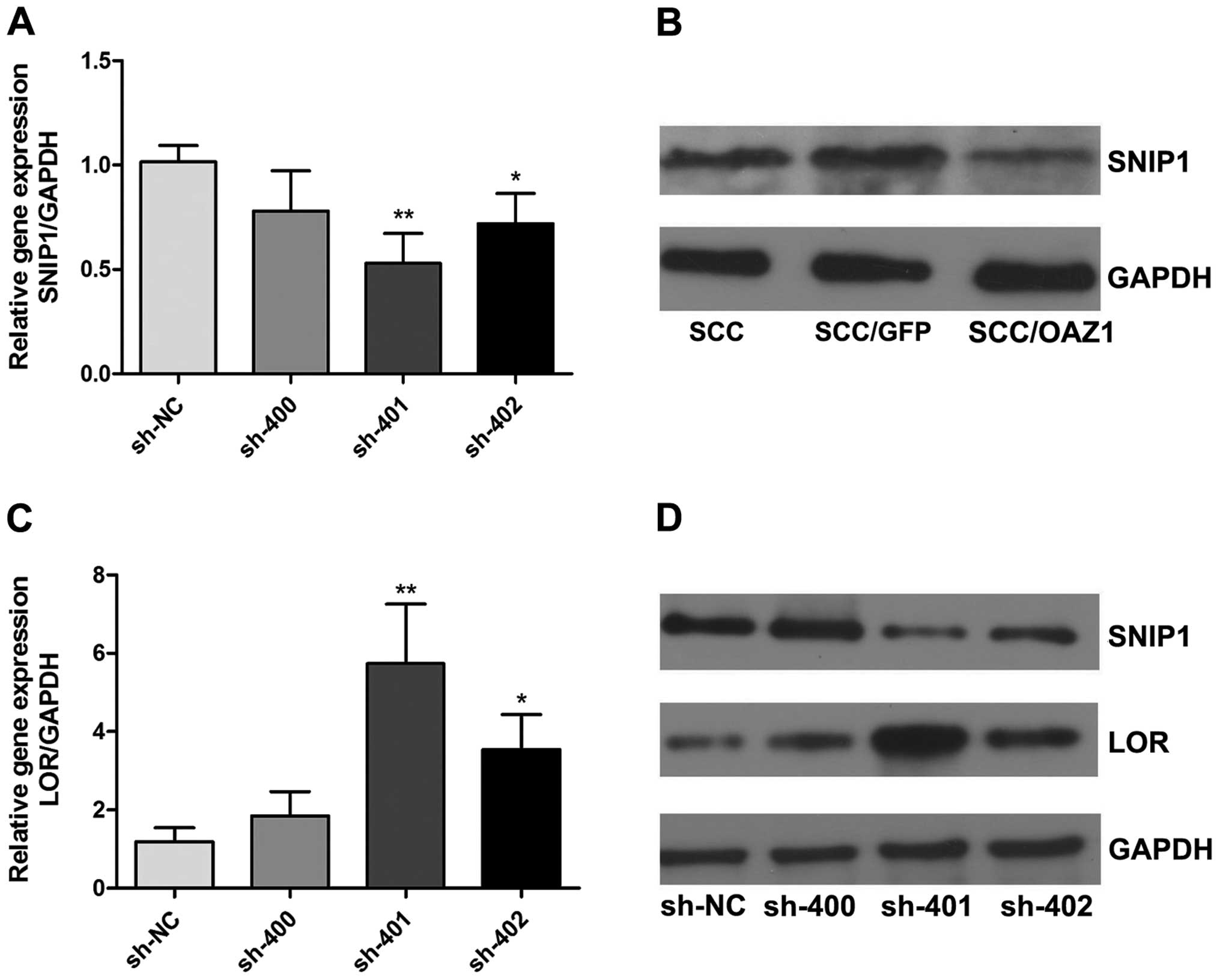|
1
|
Kahana C: Antizyme and antizyme inhibitor,
a regulatory tango. Cell Mol Life Sci. 66:2479–2488. 2009.
View Article : Google Scholar : PubMed/NCBI
|
|
2
|
Newman RM, Mobascher A, Mangold U, et al:
Antizyme targets cyclin D1 for degradation. A novel mechanism for
cell growth repression. J Biol Chem. 279:41504–41511. 2004.
View Article : Google Scholar : PubMed/NCBI
|
|
3
|
Kasbek C, Yang CH, Yusof AM, Chapman HM,
Winey M and Fisk HA: Preventing the degradation of mps1 at
centrosomes is sufficient to cause centrosome reduplication in
human cells. Mol Biol Cell. 18:4457–4469. 2007. View Article : Google Scholar : PubMed/NCBI
|
|
4
|
Kasbek C, Yang CH and Fisk HA: Mps1 as a
link between centrosomes and genomic instability. Environ Mol
Mutagen. 50:654–665. 2009. View
Article : Google Scholar : PubMed/NCBI
|
|
5
|
Kasbek C, Yang CH and Fisk HA: Antizyme
restrains centrosome amplification by regulating the accumulation
of Mps1 at centrosomes. Mol Biol Cell. 21:3878–3889. 2010.
View Article : Google Scholar : PubMed/NCBI
|
|
6
|
Dulloo I, Gopalan G, Melino G, et al: The
antiapoptotic DeltaNp73 is degraded in a c-Jun-dependent manner
upon genotoxic stress through the antizyme-mediated pathway. Proc
Natl Acad Sci USA. 107:4902–4907. 2010. View Article : Google Scholar : PubMed/NCBI
|
|
7
|
Feith DJ, Origanti S, Shoop PL, Sass-Kuhn
S and Shantz LM: Tumor suppressor activity of ODC antizyme in
MEK-driven skin tumorigenesis. Carcinogenesis. 27:1090–1098. 2006.
View Article : Google Scholar : PubMed/NCBI
|
|
8
|
Tsuji T, Todd R, Meyer C, et al: Reduction
of ornithine decarboxylase antizyme (ODC-Az) level in the
7,12-dimethylbenz(a)anthracene-induced hamster buccal pouch
carcinogenesis model. Oncogene. 16:3379–3385. 1998. View Article : Google Scholar
|
|
9
|
Feith DJ, Pegg AE and Fong LY: Targeted
expression of ornithine decarboxylase antizyme prevents upper
aerodigestive tract carcinogenesis in p53-deficient mice.
Carcinogenesis. 34:570–576. 2013. View Article : Google Scholar : PubMed/NCBI
|
|
10
|
Tsuji T, Usui S, Aida T, et al: Induction
of epithelial differentiation and DNA demethylation in hamster
malignant oral keratinocyte by ornithine decarboxylase antizyme.
Oncogene. 20:24–33. 2001. View Article : Google Scholar : PubMed/NCBI
|
|
11
|
Tsuji T, Katsurano M, Ibaragi S, Shima K,
Sasaki A and Hu GF: Ornithine decarboxylase antizyme upregulates
DNA-dependent protein kinase and enhances the nonhomologous
end-joining repair of DNA double-strand breaks in human oral cancer
cells. Biochemistry. 46:8920–8932. 2007. View Article : Google Scholar
|
|
12
|
Yamamoto D, Shima K, Matsuo K, et al:
Ornithine decarboxylase antizyme induces hypomethylation of genome
DNA and histone H3 lysine 9 dimethylation (H3K9me2) in human oral
cancer cell line. PLoS One. 5:e125542010. View Article : Google Scholar : PubMed/NCBI
|
|
13
|
Wu BP, Wang X, Ma WL, Zhang SY, Zheng WL
and Jiang L: Effect of ornithine decarboxylase antizyme 1 on the
erythroid differentiation in human leukemia cell line K562. Chin J
Biochem Mol Biol. 29:361–367. 2013.
|
|
14
|
Lin Y, Martin J, Gruendler C, et al: A
novel link between the proteasome pathway and the signal
transduction pathway of the bone morphogenetic proteins (BMPs). BMC
Cell Biol. 3:152002. View Article : Google Scholar : PubMed/NCBI
|
|
15
|
Jang SI and Steinert PM: Loricrin
expression in cultured human keratinocytes is controlled by a
complex interplay between transcription factors of the Sp1, CREB,
AP1, and AP2 families. J Biol Chem. 277:42268–42279. 2002.
View Article : Google Scholar : PubMed/NCBI
|
|
16
|
Liu GY, Liao YF, Hsu PC, et al: Antizyme,
a natural ornithine decarboxylase inhibitor, induces apoptosis of
haematopoietic cells through mitochondrial membrane depolarization
and caspases’ cascade. Apoptosis. 11:1773–1788. 2006.PubMed/NCBI
|
|
17
|
Suzuki J, Murakami Y, Samejima K, Ohtani
KK and Oka T: Antizyme is necessary for conversion of pancreatic
tumor cells into glucagon-producing differentiated cells. Endocr
Relat Cancer. 16:649–659. 2009. View Article : Google Scholar : PubMed/NCBI
|
|
18
|
Wu N, Sulpice E, Obeid P, Benzina S,
Kermarrec F, Combe S and Gidrol X: The miR-17 family links p63
protein to MAPK signaling to promote the onset of human
keratinocyte differentiation. PLoS One. 7:e457612012. View Article : Google Scholar : PubMed/NCBI
|
|
19
|
Woelfle U, Laszczyk MN, Kraus M, et al:
Triterpenes promote keratinocyte differentiation in vitro, ex vivo
and in vivo: a role for the transient receptor potential canonical
(subtype) 6. J Invest Dermatol. 130:113–123. 2010. View Article : Google Scholar : PubMed/NCBI
|
|
20
|
Robertson ED, Weir L, Romanowska M, Leigh
IM and Panteleyev AA: ARNT controls the expression of epidermal
differentiation genes through HDAC- and EGFR-dependent pathways. J
Cell Sci. 125:3320–3332. 2012. View Article : Google Scholar : PubMed/NCBI
|
|
21
|
Chan KS, Sano S, Kataoka K, et al: Forced
expression of a constitutively active form of Stat3 in mouse
epidermis enhances malignant progression of skin tumors induced by
two-stage carcinogenesis. Oncogene. 27:1087–1094. 2008. View Article : Google Scholar
|
|
22
|
Kawachi Y, Fujisawa Y, Furuta J, Nakamura
Y, Ishii Y and Otsuka F: Superficial epithelioma with sebaceous
differentiation: immunohistochemical study of keratinocyte
differentiation markers. Eur J Dermatol. 21:1016–1017. 2011.
|
|
23
|
Tu CL, Chang W and Bikle DD: The
calcium-sensing receptor-dependent regulation of cell-cell adhesion
and keratinocyte differentiation requires Rho and filamin A. J
Invest Dermatol. 131:1119–1128. 2011. View Article : Google Scholar : PubMed/NCBI
|
|
24
|
Cohen I, Birnbaum RY, Leibson K, Taube R,
Sivan S and Birk OS: ZNF750 is expressed in differentiated
keratinocytes and regulates epidermal late differentiation genes.
PLoS One. 7:e426282012. View Article : Google Scholar : PubMed/NCBI
|
|
25
|
Blander G, Bhimavarapu A, Mammone T, et
al: SIRT1 promotes differentiation of normal human keratinocytes. J
Invest Dermatol. 129:41–49. 2009. View Article : Google Scholar : PubMed/NCBI
|
|
26
|
Gasparoni A, Fonzi L, Schneider GB, Wertz
PW, Johnson GK and Squier CA: Comparison of differentiation markers
between normal and two squamous cell carcinoma cell lines in
culture. Arch Oral Biol. 49:653–664. 2004. View Article : Google Scholar : PubMed/NCBI
|
|
27
|
Kim RH, Flanders KC, Birkey Reffey S,
Anderson LA, Duckett CS, Perkins ND and Roberts AB: SNIP1 inhibits
NF-kappa B signaling by competing for its binding to the C/H1
domain of CBP/p300 transcriptional co-activators. J Biol Chem.
276:46297–46304. 2001. View Article : Google Scholar : PubMed/NCBI
|















